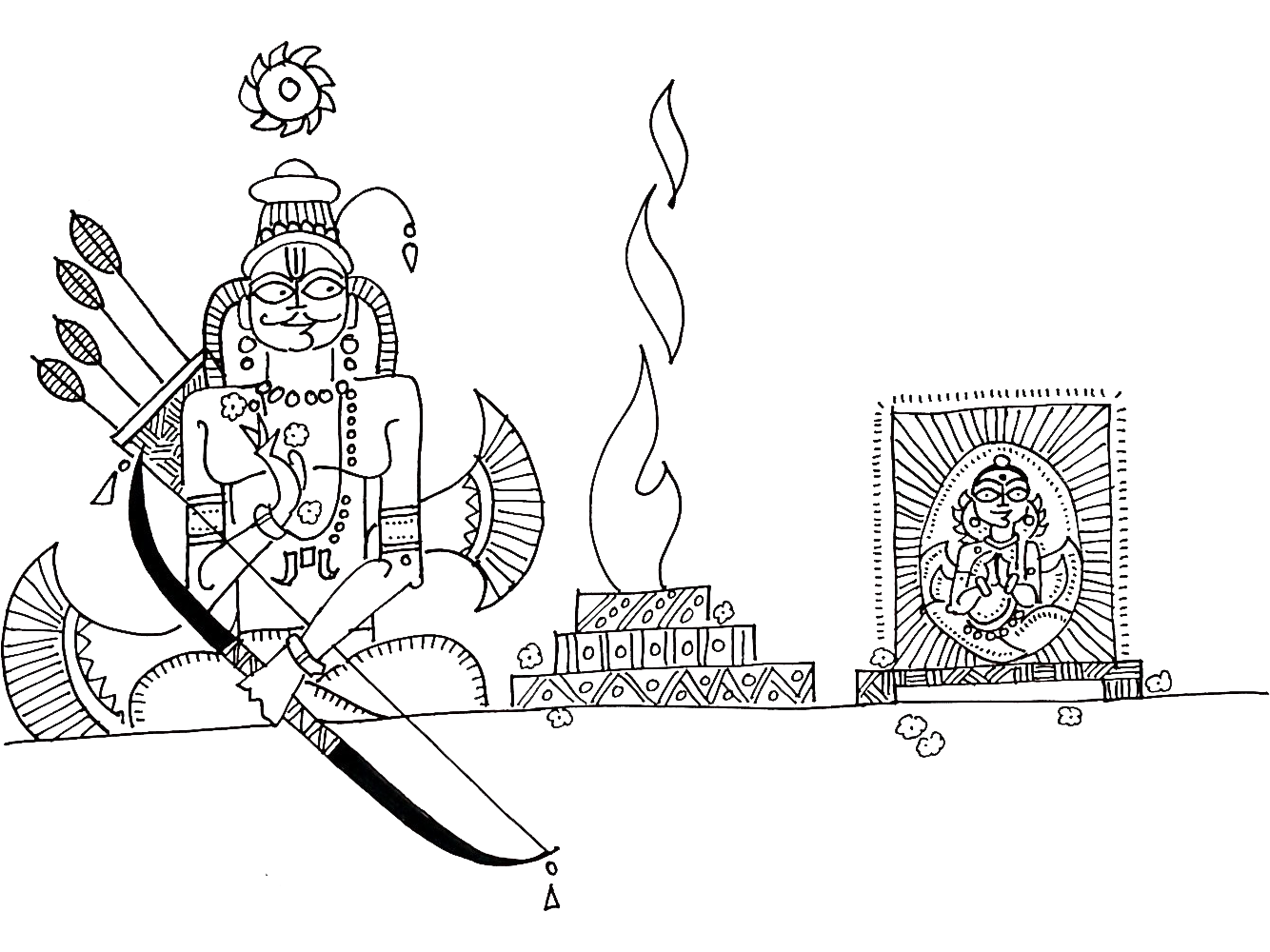In the Ramayana, when Ram declared his intention to perform the Ashwamedha yagna, he was asked to remarry as the ritual demands the presence of a wife. Ram, who had abandoned his wife Sita, following public gossip about her character and relationship with Ravana, refused to remarry. Instead, he placed a golden effigy of Sita next to him and proceeded with the ritual. The choice of gold was significant — it indicated purity, a metal that cannot be tarnished. Ram, thus, declared his wife was pure as gold, and abandoned due to a ‘soiled’ reputation, not s ‘soiled’ body or character.
While Ram rules a prosperous kingdom, his children — the twins Luv and Kush — are raised in the forest; they become entertainers, and public singers, praising the deeds of Ram: who defeated Ravana, and rescued Sita. The twins do not know the story of the abandonment. Like many a later poet, this decision of Ram has confounded many. Surely justice is more important than reputation. Or is it? Politicians, even today, know that votes come from image-building, from optics, not performance. That is key.
In the Mahabharata, the Pandava brothers, after defeating their Kaurava cousins, also perform a great Ashwamedha yagna to affirm their triumph and their sovereignty. Here there is a queen, the common wife of the five brothers, who survives many assaults on her body — from the public humiliation by the Kauravas, from the attempted abduction by her brother-in-law, Jayadratha, and by the sexual harassment by Kichaka, when she served in his sister’s palace. Draupadi is not abandoned. No gossip about her. Instead, hundreds of Brahmins are fed. They praise the king. The reputation of the Pandavas, who slaughtered their unrighteous cousins, is not damaged. Until a mongoose comes on the scene.
This mongoose is half gold. He rubs the rest of his body on the leftovers of the great royal ritual, hoping to turn the rest of his body gold. But it does not work. An act of charity was responsible for the half-gold body of the mongoose. A beggar had offered his last meal to a hungry stranger, something that only a human can do, one who cares about the other. The king with all his wealth had done charity. But proportionally speaking nothing in the scale of the beggar’s. There was scope for more generosity.
How do you demonstrate ‘opportunity loss’ in a story? You use magical creatures like a half-golden animal or the golden image of an abandoned queen. Both are part of the great epics of India that were transmitted to teach Vedic notion of kingship of kings across the land.
While in the 21st century, the Ramayana and the Mahabharata are read as triumphalist documents by activists and politicians, there is nothing about them that suggests so. Both are biographies of kings. The Ramayana begins with Ram’s birth and ends with Ram’s death, for he is God in mortal form. The Mahabharata begins with the birth of Pandava brothers and ends with their death. If one includes the Harivamsa, this epic also speaks of the birth and death of Krishna, another mortal form of Vishnu on Earth.
Both epics take place in Aryavarta, a land triangulated by the Himalayas, the Ganga, and the Yamuna. The story is carved on temple walls of the rest of India, each temple an architectural double of Aryavarta — its roof resembling the mountains, and the doorways with images of the river-goddesses. All kings of India are being told to manifest the Vedic vision in their land. In the Vedic vision, the king is Vishnu, the God who is never hungry, and who nudges everyone to feed those who fed them. So, the kingdom is not the outcome of the king’s ambition or greed or cupidity. It is a space where opportunities are created for all to discover their humanity. Their kindness.
The golden effigy of the abandoned queen and the golden mongoose is not just about the king. It is also about the kingdom. The Ramayana is about the kingdom that gossips about the queen’s character, despite being beneficiaries of the king’s good rule. The Mahabharata is about the kingdom where people want to be fed, but rarely speak about feeding. Charity is not about giving extra money away — it is about empathising with the other’s hunger while outgrowing one’s own. It is about questioning why one is still angry with the Kauravas, despite defeating them in battle, and claiming their kingdom. It is about remembering how the war has caused grief and rage — manifesting in the death of Pandava children and even a curse that will eventually wipe out Krishna’s lineage. Victory and revenge are never sweet. It festers wounds.
Many kings of India sponsored the writing of specifically the Ashwamedha Parva of the Mahabharata where the royal horse of the Pandavas travels around the countryside, reconciling with angry kings, and making peace with one and all. The epics were never about victory or defeat. They were never about righteous justice or gleeful revenge. They were about struggling with kindness, even to the cruel.











